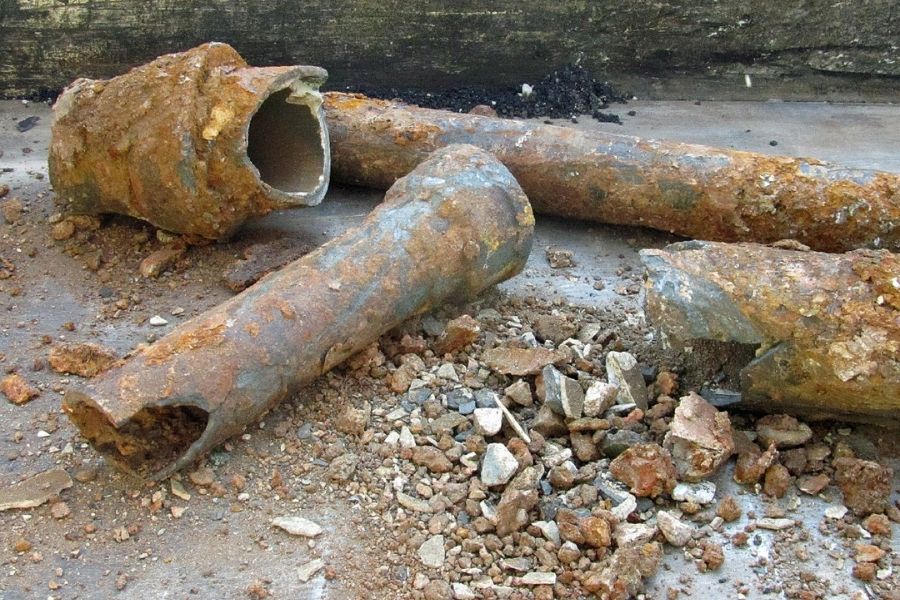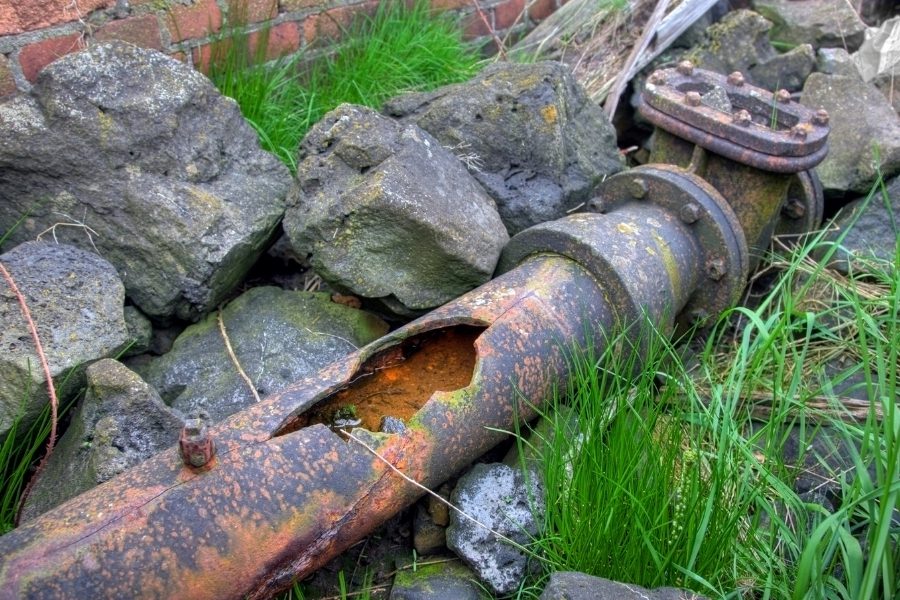My Cast Iron Sewer Pipe is Rusting and Leaking
- Plastic pipes were not yet available at the time.
- Cast iron pipes have a long lifespan, lasting between 80 and 100 years.
- Cast iron sewer plumbing is strong and can withstand heavy loads and high pressure.
- The material used for this pipe greatly reduces the sound of water and sewage flowing.
- It is heat resistant.

Related Articles
- When Should I Request Sewer Repair?
- How often do sewer lines need to be replaced?
- What You Need to Know About Trenchless Sewer Repair Cost
If you live in a house built in the 1930s or 1940s, your sewer plumbing system may be nearing the end of its useful life, with rusting and leaking already taking place.
Aside from rust and corrosion, other factors such as erratic weather changes, tree roots, soil type, and water quality can all impact the lifespan of your pipes.
Signs of a rusting and leaking cast iron sewer pipe
Sewage backups and slow drains
You’ll know when cast iron sewer pipes in your property start to rust and leak if you experience sewage backups. You’ll also notice that water from your sink and toilet takes a long time to drain. This is due to the accumulation of sewage backups and over time, it may damage your toilets and sinks. Frequent use of draining chemical products will not resolve the problem. Keep in mind that these products can damage the cast iron pipe aggravating the issue. Hence, call a sewer repair contractor so your concern can be appropriately addressed.
The sudden presence of green patches on your lawn
When your pipe leaks, sewage will eventually come out from your home and we don’t want that to happen but plants love it. Sewage water can fertilize and enhance the growth of plants, so if you suddenly see green patches on your lawn, call a professional plumber to check for the leak.
Foul-smelling odor
As your cast iron sewer pipes start to rust and leak, it begins to show some signs of cracks. These cracks would allow the release of sewer gas to your home which is why you smell the stinking odor. This is undesirable and a health hazard to you and your family. If this happens to your home you might consider calling a professional to do a sewer camera inspection so you can determine the exact location of the crack.
Structural damage
If you notice structural damage, such as cracks in the walls, this may indicate a more serious and potentially costly repair. Unrepaired leaks in your cast iron plumbing could wreak havoc on your home's foundation. Repairing your home's foundation could be costly, so you should seek the assistance of a sewage repair expert to resolve this issue.
Presence of molds in the walls
A small leak in the pipe is enough to cause molds to grow in your walls. The presence of molds in your home could pose a health risk to you and your family so it’s a good idea to address this issue immediately.
Indentation is seen in your driveway or sagging
When you have a cast iron sewer pipe that leaks, this will produce a pool of sewage water in the long run. The pool of water will eventually disappear in the soil causing some parts of it to sag and this indentation in your driveway may be difficult to locate but it’s a clear sign that your cast iron plumbing is failing.
Presence of insects and rodents in your home
Insects and rodents are not a good thing to see especially when you see them inside your home. They could be an indirect sign that your cast iron pipes are rusting and leaking. If you keep calling pest exterminators it will not resolve the issue unless you address the source of the problem first.
Water discoloration
Seeing brownish and yellowish color from your taps indicates that you might also have cast-iron water pipelines that are beginning to wear down. The discolored water is due to rust that you commonly see when you have a cast-iron water line. It will also tell you that you need to replace your pipes.
How to repair a cast iron sewer pipe

Sewer repair of cast iron pipes involves 3 steps:
Structural pipelining (also known as cured-in-place-pipelining or CIPP)
This method is a trenchless way to repair your pipes since it makes use of an epoxy-soaked liner inserted into the damaged pipe. This results in a seamless pipeline inside the existing one.
Pipe bursting
If you have a collapsed sewer pipe, it can no longer be repaired by pipelining. Hence pipe bursting is the alternative trenchless method to repair your damaged pipes. It breaks up the existing pipe clearing the way for a new and flexible sewer line to occupy the space.
Traditional sewer repair
However, if a pipe is severely damaged and cannot be repaired through pipelining or pipe bursting, the only option is traditional sewer repair, which entails concrete excavation and digging.
Looking for the Best Sewer Repair Service in Seattle, WA? Call The Pipe Doctor!
The Pipe Doctor provides different sewer services such as sewer repair, sewer inspection, sewer cleaning, and sewer replacement in the Seattle, WA area. If you are looking for affordable and reliable plumbing and sewer experts, don’t hesitate to give us a call or shoot us an email!
The Pipe Doctor
12345 Lake City Way Ste 311 Seattle, WA 98125
(206) 676-2192
thepipedr@gmail.com

Comments
Post a Comment